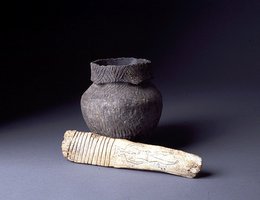
Find out where these Protohistoric cultures are.
Around 1600 CE, the first of the Protohistoric tribal cultures to return to the Nebraska region may have been the ancestors of the Pawnee. Several archaeological sites around the present day Lower Loup River in east-central Nebraska have been found, and these sites have named for that river basin.

Precise dates are difficult, but one interpretation of Pawnee stories or oral history says that they immigrated into Nebraska from the south about 1600. Archaeologists also say some groups may have migrated from the Missouri River basin in South Dakota and may have been returning descendants of the Central Plains Village Tradition groups who had left Nebraska earlier.
The Lower Loup cultural group left an impressive archaeological record in Nebraska. Many village ruins remain along the Lower Loup and Platte River valleys from Howard County to Saunders County, as well as sites in the Republican basin. Hunting camps have been found in western Nebraska and Kansas. Lower Loup groups raised maize (or corn), beans and squash. Their gardens or farms were tended by the women. They lived much of the year in villages with large circular earth lodges. In the spring of each year, they left their villages and went on a bison hunt after the crops were planted. They returned to the villages in time to harvest the crops. Then, in late fall, they set out again for the winter hunt. They hunted birds, fish and small animals, but the mainstay of their diet was the bison. They hunted the smaller female bison almost exclusively. But, even though they were smaller than the males, each female animal provided about 400 pounds of meat, enough to feed one person for a year.
These economic patterns and the pottery, tools and other material culture they produced strongly suggest the Lower Loup culture descended into the Pawnee.